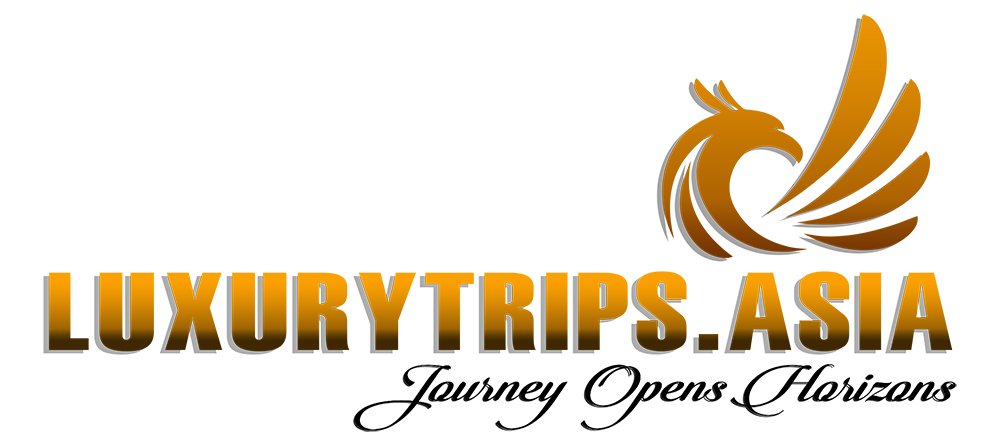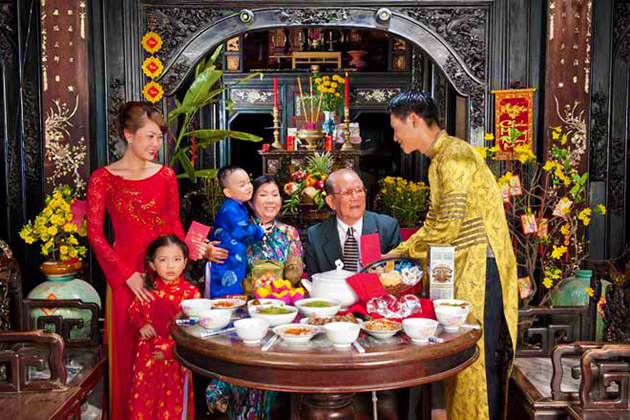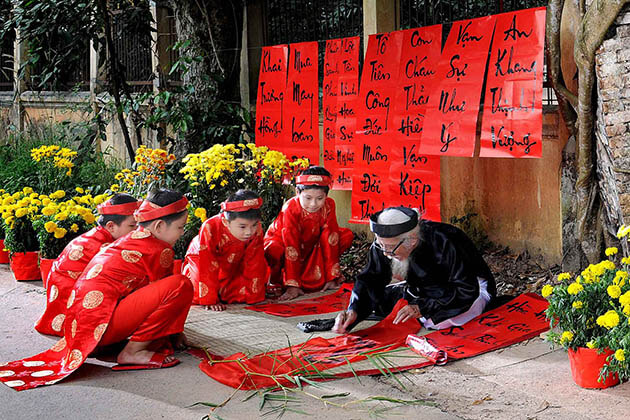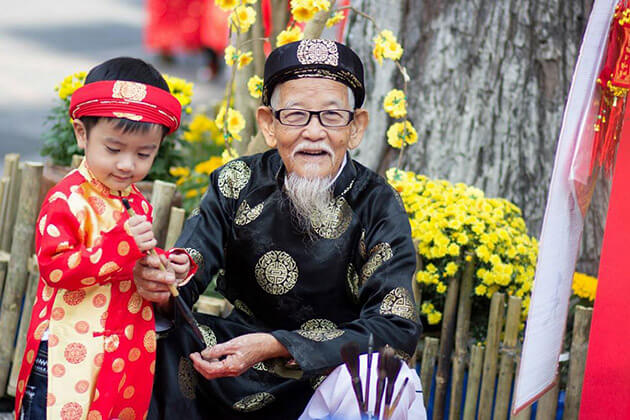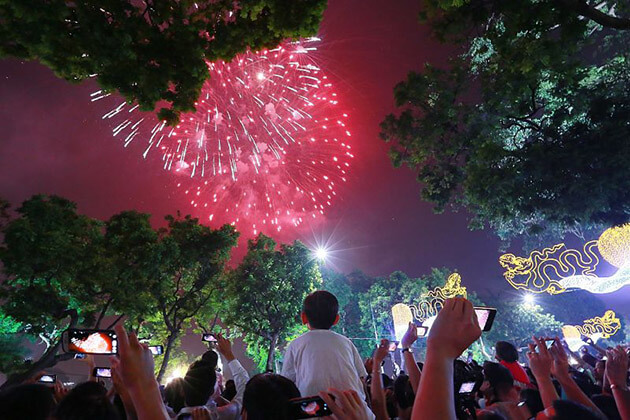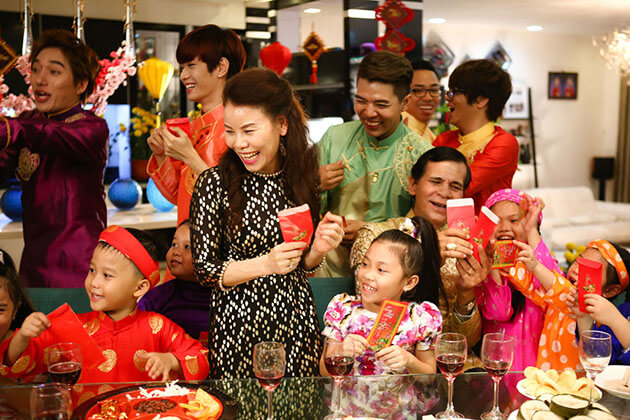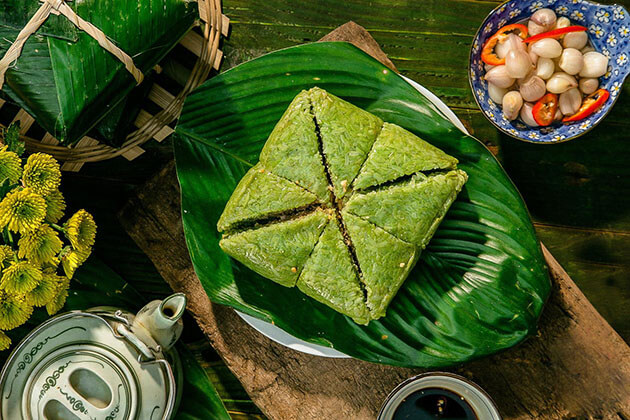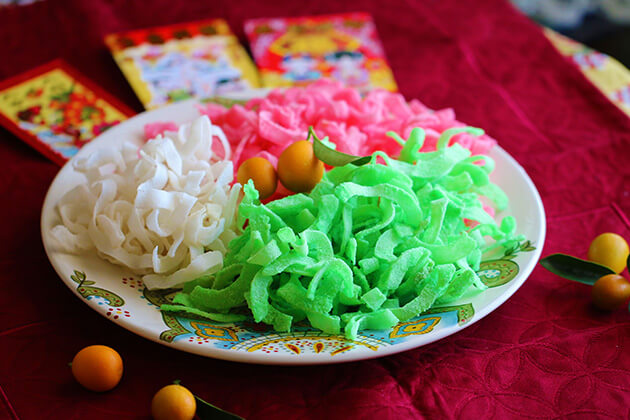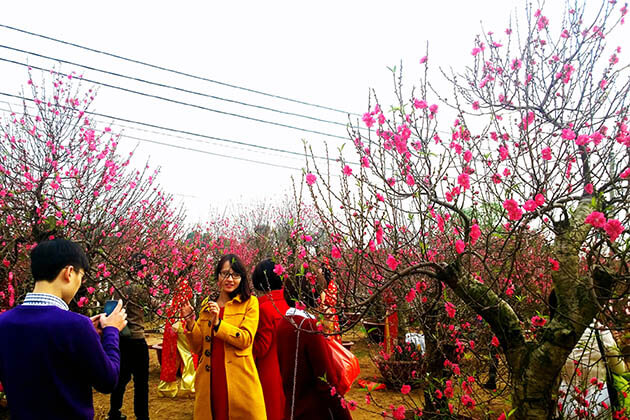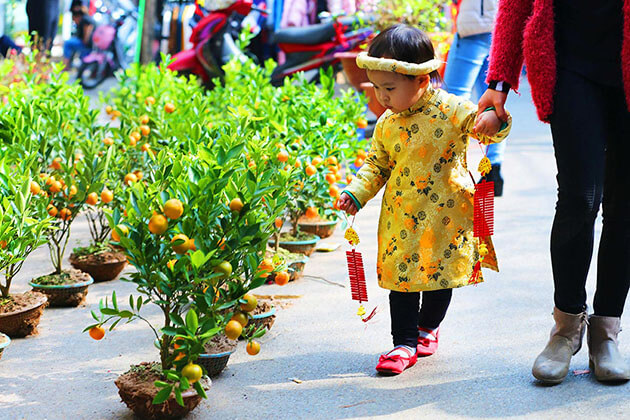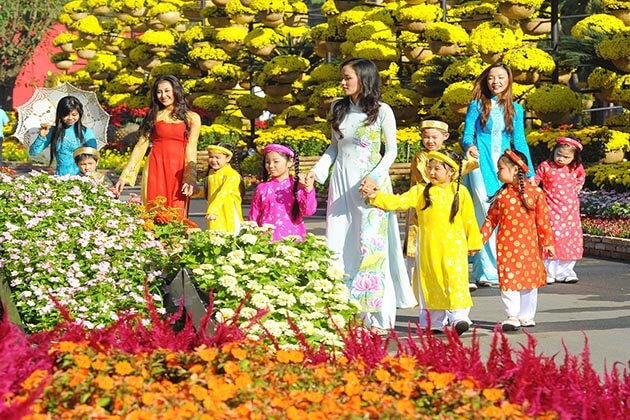Having been a local tour guide for nearly 10 years, I have always felt the joy of introducing tourists to the rich and colorful culture of my beautiful country, Vietnam. For me, one of the best ways to truly experience it is by enjoying our traditional festivals, especially the biggest one – the Tet holiday. Last spring, a couple of tourists who took part in our enchanting vacation arrived in Vietnam during the middle of this holiday. They were so amazed at the different cultural rituals and the colorful scenery. One even said that for him, it felt like Vietnamese Tet Holiday is like Christmas, Thanksgiving and New Year’s Eve blend into one glorious week of celebration. I couldn’t agree more.
The Most Important Traditions in Tet Holiday
The Vietnamese Lunar New Year is divided into three periods. The first part is the preparation week called “Tất Niên”. Next, the celebration on New Year’s Eve is called “Giao Thừa” and the rest of the holiday is called “Tân Niên”. Although each region in Vietnam has slightly different traditions in Tet, all of these customs are to be celebrated.
Preparing for Tet Holiday
One or two last weeks of the year is when all the Vietnamese people begin preparing for the Tet Holiday. Every family starts putting on decorations, shops for food and offerings, cooks delicious traditional dishes and welcome their relatives who return home. Parents try to buy the prettiest new outfits for little children to wear on holiday. You will see bustling markets and shopping streets full of people because there are so many things need to be prepared. All of these activities create an atmosphere full of joy and excitement in every house before the Lunar New Year arrives.
This is also the time for families in Vietnam to express worship to their ancestors by visiting the deceased ones’ graves in their homeland and cleaning the family altar in their home. The family altar is not the only thing being cleaned to prepare for the New Year. In fact, the Vietnamese clean all the rooms in their house so intensively that some even joke that Tet holiday is also a “national house-cleaning festival”. The locals believe that by removing all the dirt and replacing old furniture, the New Year's luck and fortune would come into the house.
The Cozy and Jolly Vietnam New Year Eve
On the evening of the last day of the year, family members gather to enjoy a banquet to wrap up the night. Everyone is so happy to be with their family at this special moment.
And then at the moment of transition, the sky is adorned with bright fireworks. The young often hang out with each other to enjoy these performances while the adults stay in to complete a special ritual to worship the gods and ancestors. They will prepare a table full of offering such as boiled chicken, fruits, flowers, and paper money. At midnight, they will burn the incense and scatter the rice and salt around their house. This tradition is performed in order to pray for peace, health, luck, and fortune to all family members.
After the firework performances are finished, the young return home in the welcome of their parents. Because in Vietnamese belief, the right person to enter the house first in the new year will bring luck to the host.
The Tet Holiday
And then come the morning of the New Year. For the first three days, people often go to friends and relatives’ houses to send wishes or stay at home to welcome their guests. For someone who is often busy year-round or works far from home, this is their only time to be free to see all their friends and family. Laughter and joyful talks are heard everywhere.
You will also see that during this time, pagodas and temples everywhere are opened for hundreds of visitors. The Vietnamese believe that it is a sacred time to be delivering your pray to the Buddha and gods.
Vietnam Cuisine in Tet Holiday
Banh Chung and Banh Tet
Banh Chung is the most popular traditional food in Vietnamese Lunar New Year and Banh Tet is a similar variation that is often seen in the Central and Southern regions. They are made from sticky rice, with the filling of grounded mung bean, pork, and pepper, all are very familiar ingredients to Vietnamese cuisine. The cake is wrapped in green leaves, with the distinctive square shape for Banh Chung and a cylinder shape for Banh Tet. They are then boiled for a long time; some family stays up till late night together to make Banh Chung for the New Year.
Pickled Onions
In the distant past, when most Vietnamese people were poor farmers, Tet holiday was the only time of the year when they were able to eat nice meals. There are many tasty traditional dishes such as spring rolls, sticky rice, Vietnamese sausages, boiled chickens. But too much meat and oily food could be quite a cloy. Therefore, the Vietnamese have come up with pickled onions, which is the perfect sour and crunchy vegetable to balance with other dishes.
Candied Fruits
This is the must-have snack to have in the house to welcome guests who come and visit in the Lunar New Year holiday. Fruits like apple, tangerine, coconut and some types of vegetables like carrots are dried and caramelized to make these sweet treats. Another common nibble that you will also see in the Vietnamese New Year snack tray is roasted watermelon and sunflower seeds. They are very sweet and nutty.
Tet Holiday Wishes, Greetings, and Gift
As mentioned above, everyone in Vietnam spends their New Year holiday to visit friends and relatives. The Vietnamese greet by saying “Chúc mừng năm mới!”, which simply means “happy new year”. The Vietnamese also send out wishes of health, luck, and fortune for others. The most popular ones are “An Khang Thịnh Vượng” (security and prosperity), “Vạn Sự Như Ý” (May all your wishes come true) and “Sống Lâu Trăm Tuổi”, which is often used by children to their grandparents to wish them longevity.
Tet holiday in Vietnam is also special with the tradition of giving lucky money for the children. The adults will prepare pretty little red envelopes with some money inside to give out to their own children and the children that they know. With that, the children will be blessed and have lots of luck.
Tet Holiday Decorations, Plants and Flowers
Peach and Apricots Blossoms
One can easily notice when the Tet holiday comes from the appearance of these flowers on the streets. Peach grows in the north of the country while apricot is popular in the south. They are must-have for New Year because the light red color of peach blossom is believed to bring luck and bright yellow apricot flower means fortune.
Kumquat Tree
Kumquat tree is also a popular type of plant that fills the streets of Vietnam during the New Year holiday. The locals pay much attention to picking out the perfect kumquat tree to bring home to celebrate Tet. It has to have everything, young leaves, flowers, buds, and fruits. Other than the luck and fortune, the kumquat tree also brings into the home of the Vietnamese a pretty scene and pleasant smell.\
Red Scrolls
Red is the theme color for decorating in Lunar New Year, and one of the most common pieces of decoration is the red scroll.
In the distant past, the number of people who know how to read and write was much fewer and they often work as teachers or belong to the nobility. Therefore, in the Tet holiday, the normal peasants would come to a teacher’s house to ask for a scroll with a meaningful word on it. The word can be peace, health, fortune, or intelligence, etc. depending on what the owner wants to have in the new year. Then he or she would bring it home and hang it in a dedicated position in their home. Nowadays, only a few people know how to write and read in ancient Vietnamese script, but the tradition is still kept well. You can visit the Temple of Literature during the Tet holiday to see lines of men in “ancient-teacher” costume writing red scrolls for hundreds of people who come to visit.
The Vietnamese Traditional Outfits in Tet Holiday
Vietnam has several traditional costumes, and Ao Dai is the most popular type worn in Lunar New Year. In the past, it was worn by both sexes. But nowadays, you will see Ao Dai being worn more by women than men. The outfit is a long tunic with a snug but short collar that connects with a line of buttons running down the side chest. It is worn over a long loose pair of contrast-colored silk trousers. The female’s Ao Dai is ankle-length and the male’s version is knee-length. The material to make Ao Dai can be voile, chiffon for women and silk for both sexes. The Vietnamese often were their traditional costumes to visit their relatives or visit pagodas in the New Year holiday.
Tet Holiday and Zodiac Signs
Vietnamese Tet holiday is based on the Lunar calendar – a calendar that tracks the phases of the moon. The calendar also adopts a set of 12 animals as zodiac signs that are quite similar to other Asian countries. They are Mouse, Ox, Tiger, Cat, Dragon, Snake, Horse, Goat, Monkey, Cock, Dog, and Pig. The cycle of 12 animals is attached to each hour, day, month and year. The Vietnamese believe that each animal possesses a unique characteristic to affect the time that it holds. The Vietnamese New Year holiday in January 2020 marks the year of the Mouse.
The astrologers said it will be a year of new beginnings because the Mouse is the first animal in the zodiac signs! There will be new opportunities, love, and money for everyone. 2020 is going to be successful, but make sure that you have prepared well!
Tet Holiday Calendar and the Corresponding Zodiac Signs
| Year | Date | Zodiac Signs |
| 2020 | 25th January 2020 | Rat |
| 2021 | 12th February 2021 | Buffalo |
| 2022 | 1st February 2022 | Tiger |
| 2023 | 22nd January 2023 | Cat |
| 2024 | 10th February 2024 | Dragon |
| 2025 | 29th January 2025 | Snake |
| 2026 | 17th February 2026 | Horse |
| 2027 | 6th February 2027 | Goat |
| 2028 | 26th January 2028 | Monkey |
| 2029 | 13th February 2029 | Chicken |
| 2030 | 3rd February 2030 | Dog |
Are you going to get into Asia luxury tours? Are you interested in the Tet holiday? If yes, do not miss a chance to visit Vietnam this time.
